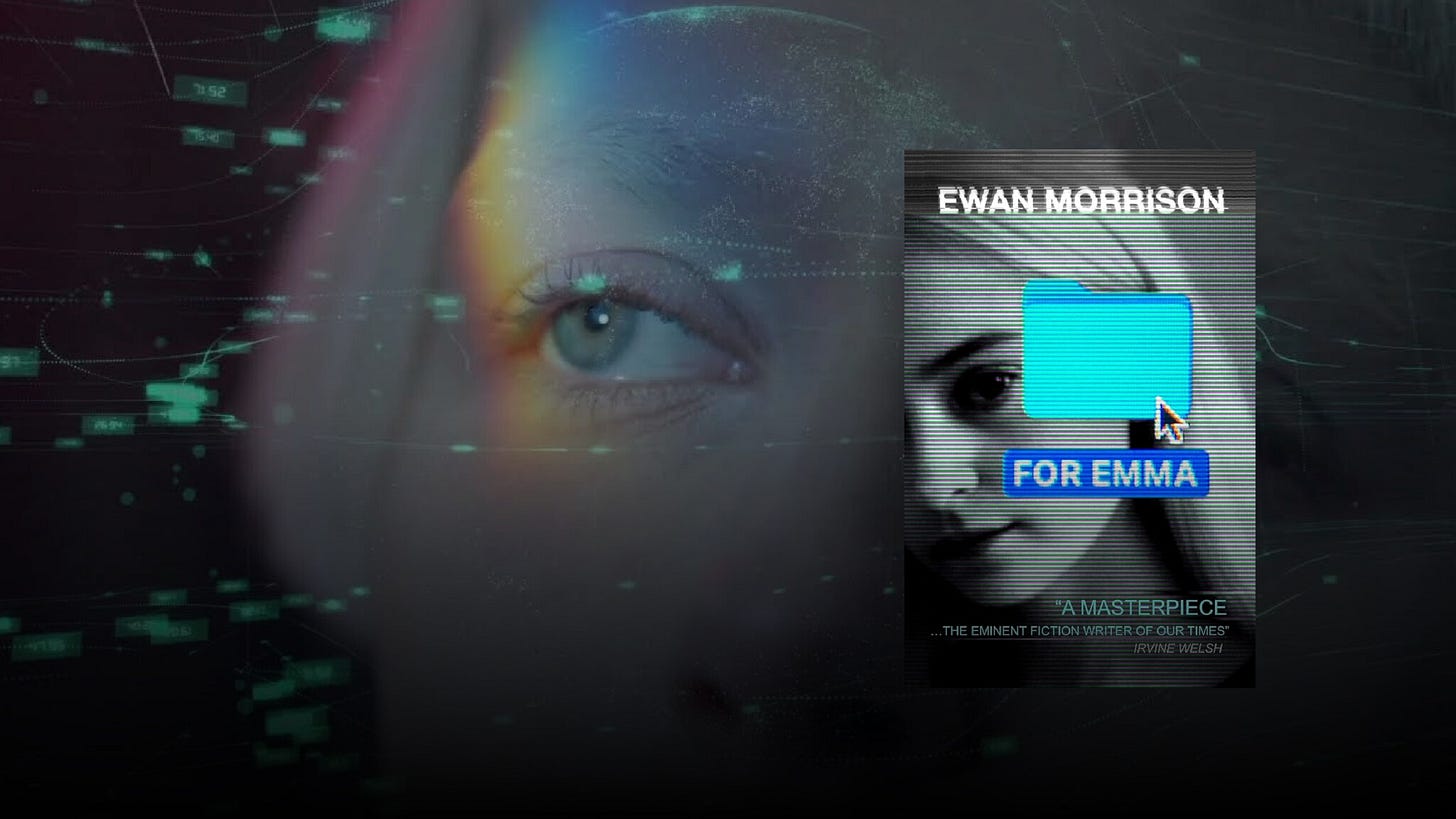Scottish novelist Ewan Morrison’s FOR EMMA explores love, loss, and digital memory in a haunting new take on identity and obsession.
How worried should we be about new technology? The car and the aeroplane loomed at one time over humanity like great, improbable, alien inventions — and even the humble escalator required smelling salts on first launch. The plane and the car, in particular, became objects of fascination for artistic movements, particularly Futurism and other avant-gardes. What would a literature or an artform capable of meeting and adequately reflecting new technology look like?
Filippo Tommaso Marinetti, author of the 1909 Futurist Manifesto wrote “A racing automobile with its bonnet adorned with great tubes like serpents with explosive breath … a roaring motor car which seems to run on machine-gun fire, is more beautiful than the Victory of Samothrace.” Yet for every encomium penned to new machines, there is another literary tendency, filled with dire warnings, prophesying a world turned dark at the hands of tools that have rendered us captives and slaves.
With FOR EMMA, Ewan Morrison follows in a great lineage of those who can take a strand of the present, a promise, and draw out the logical — and perhaps devastating — conclusions of a particular trajectory. Morrison’s technogothic novel also pays homage to the great romantic tendency of novels such as Mary Shelley’s 1818 Frankenstein (whose subtitle “Or, The Modern Prometheus” alerts us to the terrible and tragic nature of human hubris), but also to more recent attempts to understand our mediated, screen-based, virtual age, in the work of William Gibson in particular, whose “cyberpunk” novels Neuromancer (1984) and Pattern Recognition (2003), among others, explore a world where memory and intelligence are stripped from their human bearers.




